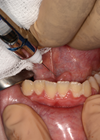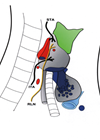How I Do It archive for 2017
Salivary duct clipping for drooling
Drooling can be a challenging problem to manage in paediatric ENT. The variety of medical and surgical treatments suggests that there is no gold standard treatment. Nicola Stobbs and Ravi Thevasagayam describe an approach to ligating the salivary ducts. Drooling...
Superior semicircular canal dehiscence: transmastoid obliteration
Sometimes patients with dizziness turn out to have slightly more unusual causes of their problem. Thomas Milner and Georgios Kontorinis describe their technique for managing patients who have a diagnosis of superior canal dehiscence as an identified cause of their...
Parathyroidectomy
Many ENT head and neck surgeons are now involved in thyroid surgery. This can also include the need to explore the parathyroids, either to preserve them or indeed to resect parathyroid adenomas. David Smith, a highly experienced endocrine surgeon from...
Elasticated retraction in head and neck surgery – a trainee’s perspective
The effectiveness of surgical technique and satisfactory outcome is greatly dependent on good surgical exposure. Retraction requires adequate traction and counter-traction of tissues in order to expose the tissue or organ under scrutiny for the surgeon. This is a universal...
Transnasal oesophagoscopy (TNO) and balloon dilatation under a local anaesthesia
Many of us are becoming more and more familiar with the use of transnasal oesophagoscopy. It has a number of well-described uses in the outpatient setting and is well tolerated by our patients. Yakubu Karagama describes taking this technique a...
The ‘bus stop’ incision for bone-anchored hearing aid placement: a step-by-step approach to soft tissue preparation
There have been many descriptions of soft tissue preparation in the era when subcutaneous tissue was routinely removed with the Nijmegen technique [1] or with the dermatome [2]. More descriptions continue to evolve with the advent of tissue preservation techniques,...











